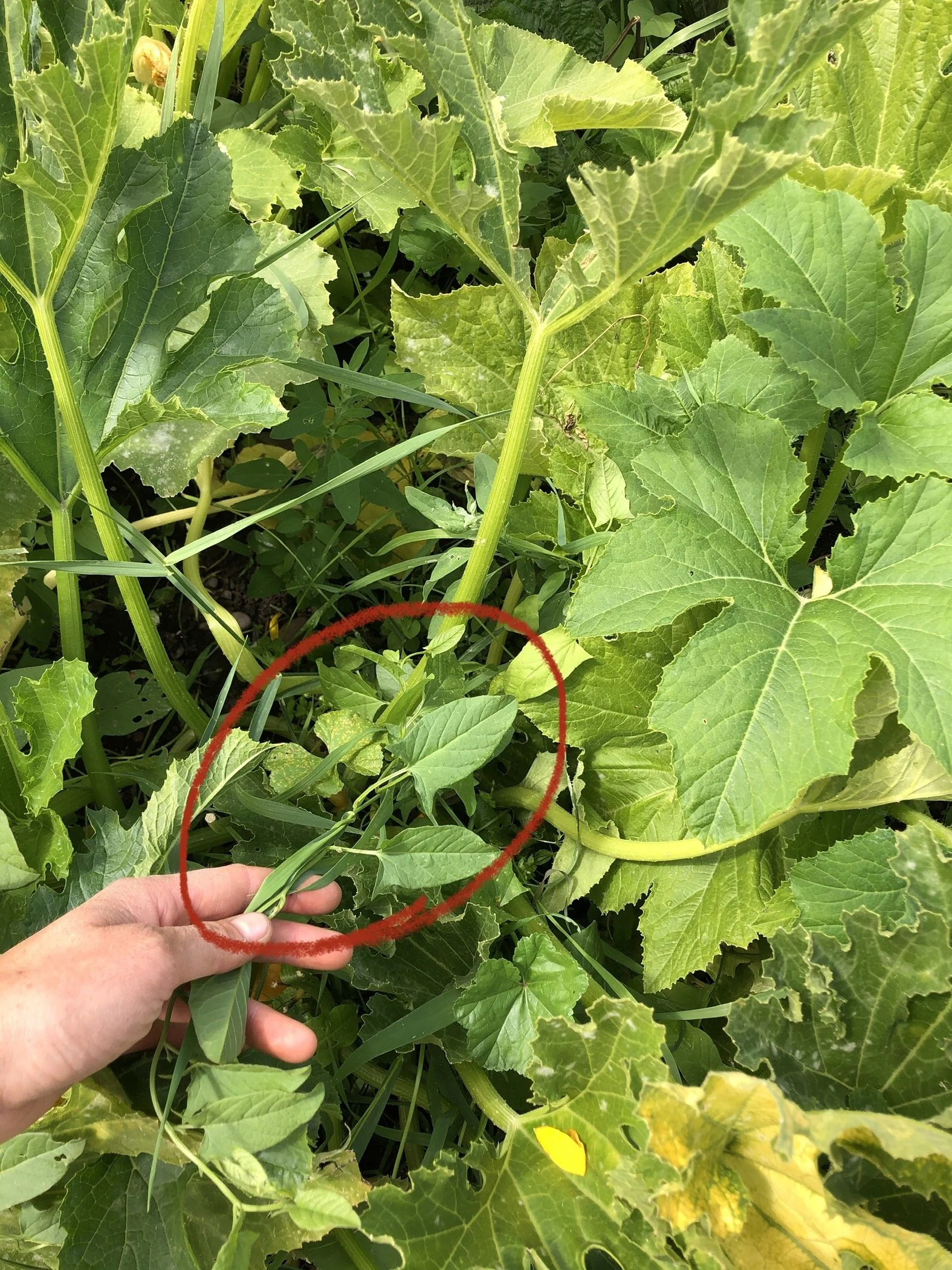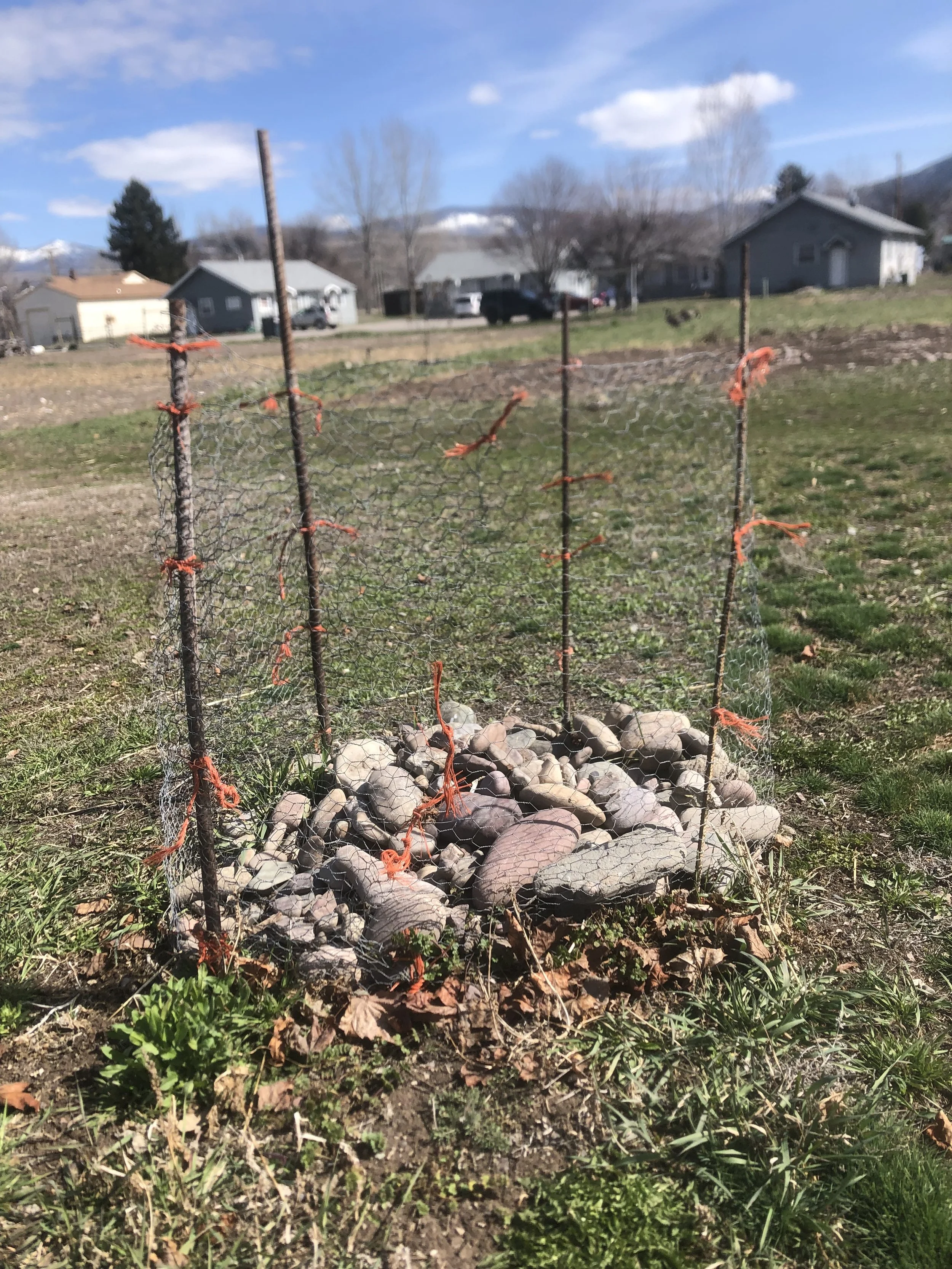River Road Community Garden Orientation
Hello and welcome to River Road Community Garden!
Greg Price
River Road Farm and Garden Director
The River Road site is the original Garden City Harvest site, first farmed by Garden City Harvest 25 years ago. Today, River Road is home not only to the community garden, but also to a farm and Garden City Harvest's administration office. There is a lot of activity at this site, and so it is especially important to watch the orientation video and read all of the important information below. We hope that with an understanding of all the pieces that make up this garden site, you will help us care for it and keep it functioning and thriving for the benefit of everyone.
Important House Keeping Items:
No dogs allowed. This site has free-ranging chickens and receives a lot of visitors and tours. There may be other staff dogs on site in case you see a dog.
Chickens: The chickens sometimes wander into the community garden area and scratch in plots. If they damage anything, let Greg know. We do our best to keep them out. We provide extra starts on the picnic table by the community garden shed, so if you lose any starts to the chickens, let us know and we can offer you these. Early in the season, it is a good practice to cover most of your early starts with row cover (found in the community garden shed), as it will increase the growth rate by a third and keep out curious chickens. However, don’t cover onions. Once the plants are about knee high, the chickens shouldn’t be a problem and you can remove the row cover. Please let the farm staff know about any chicken problems so they can address it as quickly as possible.
String: Please do not use string to mark or outline your plot. Several gardeners have tripped on the string and injured themselves, and it’s a hazard for staff when weed-whacking, as well.
Communicate with your garden neighbors! Here is the link to the private gardener Facebook group. This is a great way to communicate with fellow gardeners and stay up to date with other happenings or updates in the garden.
Being on a site with lots of gardens and a farm means that one person's problem can become everyone's problem, so it’s extra important to maintain your plot and weeds. Greg manages the farm, garden, and overall property, and will call gardeners who are not weeding their plots.
For issues or inquiries, contact Greg or other Community Garden Staff (contact info in the shed).
GARDEN SHED AND TOOLS
The first few things you’ll notice upon arriving at the garden are two garden sheds. One is for farm use (farther north) and the other is for community gardener use (farther south). Inside the shed, you’ll find communal tools, wheelbarrows, gloves, row cover and more for your use at the garden. Just make sure to put the tools back wherever you found them.
A first aid kit, important safety information, and other important documents will be inside the shed. On the shelves inside the shed, you’ll find resources on gardening, a recipe card box to log your three service hours, and free seeds.
Read the Whiteboards
Please read the white board on the outside of the garden shed for informational updates that range from general info to specifics regarding certain weeds or insects. The white boards also have a map of the community garden and will have lists of starts we are giving out and an out of town watering section. You should always arrange for your plot to be watered by a garden neighbor or friend when you are out of town. You can also put your info on the watering board, so we can make sure that it at least stays alive. Look for the specific section on the board for this.
Remember, as mentioned in the contract, all gardeners are required to fill at least three hours helping to maintain the greater community garden and communal areas.
This can include things like tidying the tool shed, picking up rocks or trash, or weeding an abandoned plot. Often, Greg will write tasks that need done at the garden that can go towards your three service hours on the white boards as well.
Soil amendments
Manure
Garden City Harvest brings in composted manure every spring for community gardeners to help supplement their garden soil. Each garden plot is allotted two 5-gallon buckets of manure each spring, located next to the community garden shed. The manure is to provide some nitrogen and should be incorporated into your garden before planting. Gardeners are also encouraged to build their own soil by bringing in other amendments as long as it doesn’t contain chemicals, synthetic fertilizers, or bio solids (treated sewage). Check out our Sustainable Growing Guidelines for more information.
Compost
Additionally, there is compost on the south end of the property. Please use the compost that has a “useable compost” sign in it. Use what you think you need. Compost is for a nutrient boost and to build/maintain organic matter.
Deposit weeds and organic material from your garden in the compost pile with the correct sign in it. There is a separate pile for stalky plants like sunflowers and broccoli marked as a stalk pile. These piles can be found back along the south fence line.
If you bring in fertilizer or soil amendments, please check with Greg first. Just because a bag or container says it's organic does not mean it is.
Straw
Garden City Harvest staff deliveries straw every fall. These are for community gardener use as well. We recommend you use straw only for mulching garlic and overwintering crops. Unfortunately, due to rising prices of straw and diminishing local sources, Garden City Harvest cannot provide every gardener with straw and ask those who have the means to purchase your own straw in the fall. If you do use the straw we provide, please limit your use to 1/2 bale per plot. We also strongly encourage you to use leaves if you have them available as they are a great mulch for your overwintering soil. Straw can be found at Ace Hardware, Murdochs, CHS Mountain West Co-op, and local nurseries.
Most wanted weeds
Weeding is a fundamental part of gardening and should be done weekly. If you keep up with it using a hoop (hula) hoe, it should take no more than an hour a week to keep your plot clear of most weeds. If you choose to weed less often, the task will get exponentially more difficult, and you will be on your hands and knees digging out weeds. Keep your eyes out for notices about weeds throughout the growing season. Watch the video tutorials and look at the photos below for weeding tips, and if you have any questions about weeds, please ask!
While there are many garden weeds, we have three problem plants on the site - quack grass, shaggy soldier, and bindweed. Bindweed and shaggy solider are so invasive that they should be placed in the trash and not the compost pile. Look for a trash can near the garden shed and a sign.
Hula hoe weeding purslane between rows of baby beets
Quack Grass
Quack grass is grass with white, wire like roots and should be left out next to the compost pile we are using to dry out before it is added to the compost.
Try weeding larger patches of quack grass using a digging fork.
Be careful to remove the long roots of quack grass using a trowel or digging knife.
Shaggy Soldier
Shaggy soldier is warm weather weed that has small white and yellow flowers. Keep up with it, as it can overrun a plot and the entire property. We are trying several tactics to reduce its presence and Greg will let you all know when it starts emerging.
Flowering shaggy soldier in a kale patch.
Some baby shaggy soldiers awaiting their fate in a kale patch
A small shaggy soldier plant
Bindweed
Bindweed is a perennial that is very sneaky. We want you to be able to ID it before it flowers and weed it out. It is bad in a few plots.
Try to dig up the entire root of the bindweed plant using a trowel or digging knife.
Bindweed can be sneaky, so keep your eyes open. Here are some bindweed leaves hidden amongst some squash leaves.
Don't ever let your bindweed go to flower!
Hoses and Watering
Spigots and garden hoses are distributed throughout the garden along the pathways. When done with the hose, please coil it up, so it is not a tripping hazard. Also, release the water pressure in the hose by opening the hose nozzle after turning off the water at the spigot. This will help our hoses last longer because water that sits in a hose will expand in the heat and cause the hose material to break down faster. Finally, do not yank on hoses and pay attention to not twist or bend the hose spigots.
Pay attention to where the water line is and do not dig straight down where it is. The line is obvious on the east side of the garden, and it is staked out where it is not so obvious so that it is easier to see. Please ask if you have any questions. If a water line or spigot breaks, it could be a few days until it is repaired, making watering very difficult. Please report any breaks or leaks immediately.
The water from the blue frost free pumps is potable and much tastier than the City's chlorinated water in our humble opinion.
Rock piles
Our garden soil is full of rocks from Glacial Lake Missoula. Please do not remove small rocks and gravel from your plot- they are part of the soil and give it structure for the microbes and insects that are important in organic systems. Place any unwanted rocks that are larger than a golf ball in the designated rock piles.
DO NOT THROW ROCKS IN THE PATHWAYS. It destroys our lawn mowers and is a hazard for those mowing or weed whacking.
This new rock pile is located on the east side of the River Road garden. Please place any large rocks you remove from your plot or pathways here.









